Search the Special Collections and Archives Portal
Search Results
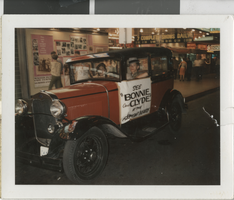
Photograph of a car advertising "Bonnie and Clyde" outside of the Fremont Theatre, Las Vegas (Nev.), 1967
Date
1967
Archival Collection
Description
A man and woman sitting in a car outside of the Fremont Theatre with a sign on it advertising "Bonnie and Clyde." The sign reads: "See 'Bonnie and Clyde' at the Fremont Theatre." Site Name: Fremont Theatre (Las Vegas, Nev.)
Image
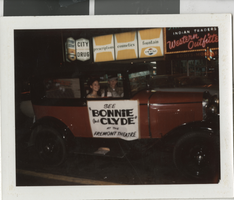
Photograph of a car advertising "Bonnie and Clyde" outside of the Fremont Theatre, Las Vegas (Nev.), 1967
Date
1967
Archival Collection
Description
A man and woman sitting in a car outside of the Fremont Theatre with a sign on it advertising "Bonnie and Clyde." The sign reads: "See 'Bonnie and Clyde' at the Fremont Theatre." Site Name: Fremont Theatre (Las Vegas, Nev.)
Image
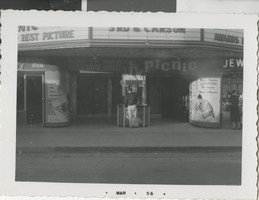
Photograph of the Fremont Theatre entrance advertising "Picnic," Las Vegas (Nev.), March 1956
Date
1956-03
Archival Collection
Description
Black and white image of the entrance of Fremont Theatre advertising "Picnic" starring William Holden, Kim Novak, and Rosalind Russell. Site Name: Fremont Theatre (Las Vegas, Nev.)
Image
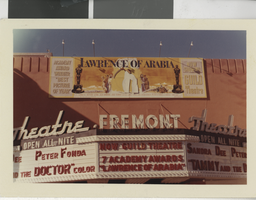
Photograph of the Fremont Theatre marquee advertising "Tammy and the Doctor," Las Vegas (Nev.), 1963
Date
1963
Archival Collection
Description
The marquee reads: "Sandra Dee, Peter Fonda, 'Tammy and the Doctor' color; Now Guild Theatre 7 Academy Awards 'Lawrence of Arabia.'" Image also has a billboard for "Lawrence of Arabia" above the marquee. Site Name: Fremont Theatre (Las Vegas, Nev.) Street Address: Fremont Street
Image
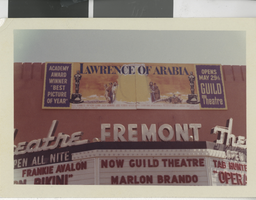
Photograph of a billboard advertisement for "Lawrence of Arabia," Las Vegas (Nev.), 1962
Date
1962
Archival Collection
Description
The front of the Fremont Theatre with a sign at the top of the building advertising "Lawrence of Arabia." The sign reads: "Academy Award Winner 'Best Picture of the Year' 'Lawrence of Arabia' opens May 29th Guild Theatre." Site Name: Fremont Theatre (Las Vegas, Nev.) Street Address: Fremont Street
Image
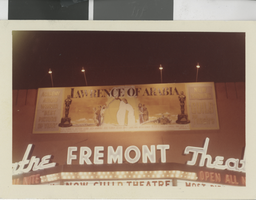
Photograph of a billboard advertising "Lawrence of Arabia," Las Vegas (Nev.), 1962
Date
1962
Archival Collection
Description
The exterior of the Fremont Theatre with a sign above the marquee advertising "Lawrence of Arabia." The sign reads: "Academy Award winner 'Best Picture of the Year' 'Lawrence of Arabia' Now Showing Guild Theatre." Site Name: Fremont Theatre (Las Vegas, Nev.)
Image
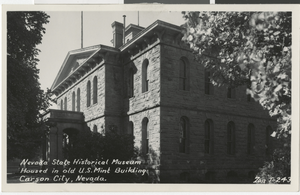
Postcard of the Old U. S. Mint, Carson City, Nevada, 1869 - 1899
Date
1869 to 1899
Archival Collection
Description
An external view of the old U. S. Mint building, now the Nevada State Historical Museum in Carson City, Nevada. Site Name: Old U. S. Mint Building (Carson City, Nev.)
Image
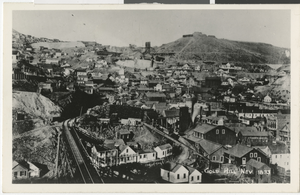
Postcard of Gold Hill, Nevada, 1873
Date
1873
Archival Collection
Description
A panorama of Gold Hill, Nevada.
Image
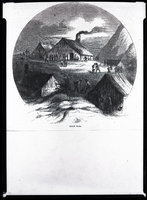
Negative of Gold Hill drawing, 1862 - late 1800s
Date
1862 to 1899
Archival Collection
Description
A line drawing of a saloon in Gold Hill, Nevada.
Image
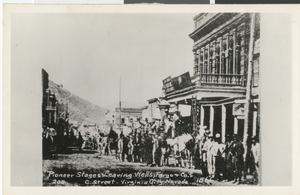
Postcard of pioneer stages on C Street, Virginia City, Nevada, 1866
Date
1866
Archival Collection
Description
A view of pioneer stages leaving Wells Fargo & Co. on C Street in Virginia City, Nevada. Street Address: C Street
Image
Pagination
Refine my results
Content Type
Creator or Contributor
Subject
Archival Collection
Digital Project
Resource Type
Year
Material Type
Place
Language
Records Classification
